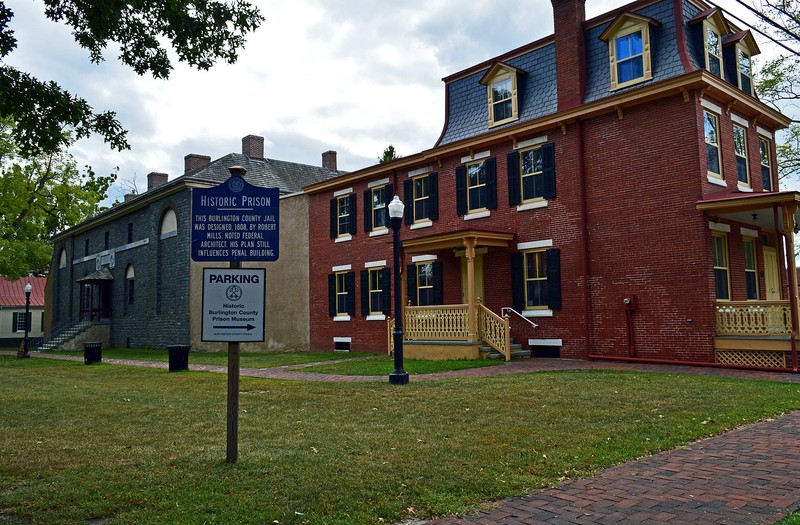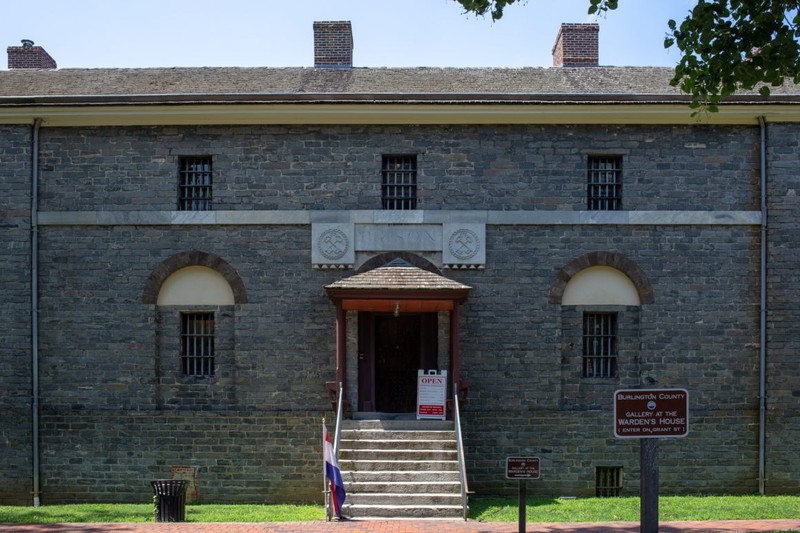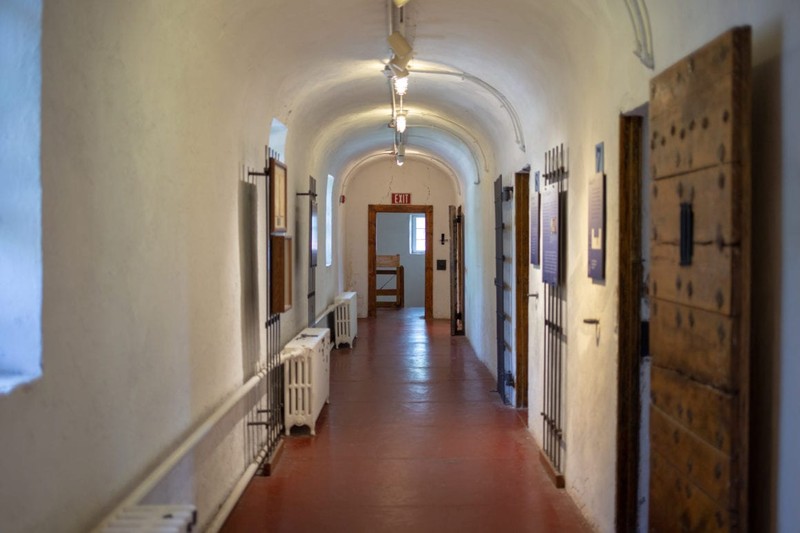Burlington County Prison (Burlington County Prison Museum Association)
Introduction
Text-to-speech Audio
Images
Burlington County Prison (in the background)

Burlington County Prison

Burlington County Prison

Backstory and Context
Text-to-speech Audio
The Burlington County Prison opened in 1811 and closed in 1966 as the United States' oldest prison in continuous; it became a museum during the 1980s. The prison design reflected many nineteenth-century prison reform ideas, including fireproofing, improved ventilation, proper heating, and individual cells. Other design features consisted of separating work and storage areas and improving supervisors' ability to manage the prisoners. The prison architect Robert Mills, and his mentor, Benjamin Latrobe, gained fame for designing several notable buildings in Washington D.C. The duo also collaborated on a South Carolina prison project that, while never completed, eventually served as the inspiration for the Burlington Prison.
Prison reform began to gain sincere support in the late eighteenth century in England. During the 1770s, John Howard, Sheriff of Bedford, visited prisons in England and abroad and wrote on reform, which became the basis for modern penology. He advocated single, ventilated cells, providing prisoners with meaningful jobs, implementing corrective punishment, and separating prisoners according to the seriousness of their crimes. His concepts began to influence U.S. officials during the early nineteenth century. In fact, American achievements in prison systems and architecture proved so impressive that European officials visited the United States to study its prisons.
Architect Robert Mills, who designed numerous federal and state buildings, including the Washington Monument, and the U.S. Treasury Building, also designed Burlington Prison. Mills was a protege of Benjamin Latrobe, often referred to as the "father of American architecture." (Both men played large roles in designing Washington D.C..) In 1809, while involved in a South Carolina penitentiary project (that never materialized), Mills corresponded with Latrobe about prison design. Latrobe's comments speak to his theories on prison reform (shared by Mills).
"The two leading objects of a penitentiary program are these:
1. The punishment by confinement and employment of offenders against the peace of society.
2. The restoration of these offenders to society when their period of punishment is expired, as reformed in their sentiments and especially in their habits, as to become useful, or at least not noxious ingredients of the community."
Latrobe also noted that the prison designed should allow for workspaces so prisoners could work in various trades. He said that men who work together "fatigue themselves more and sleep sounder. This contributes exceedingly to their safe-keeping as well as to their morals." Mills designed the Burlington Prison based on the same philosophy that inspired his South Carolina design.
Mills strongly believed in separating prisoners based on the crimes they committed, which he worked into the building's design. Those charged with less serious crimes remained on the first floor, where cells had much larger windows than the second floor, home to serious criminals. Instead of placing a dungeon in the basement, where criminals would either go mad or dig a tunnel to escape, the Burlington County Prison maximum security cells could be found on the top floor. Mills also selected the motto located above the door, which reads: "Justice Which, While it Punishes, Would Endeavor to Reform the Offender," was chosen by architect Robert Mills.
So well built, it remained in operation until the 1960s. Since the 1980s, the prison has functioned as a public museum. The prison stands as a reminder of nineteenth-century prison reform, as well as an example of the work completed by one of America's first lauded architects, Robert Mills.
Sources
Bryan, John M. "Robert Mills, Benjamin Henry Latrobe, Thomas Jefferson, and the South Carolina Penitentiary Project, 1806-1808." The South Carolina Historical Magazine 85, no. 1 (1984): 1-21.
Carter, Edward C. "Benjamin Henry Latrobe and the Growth and Development of Washington, 1798-1818." Records of the Columbia Historical Society, Washington, D.C. 71/72 (1971): 128-49.
Charitan, Alexandra. "150 years of escapes and executions at Burlington County Prison, one of the most haunted places in New Jersey." Roadtrippers. roadtrippers.com. August 3, 2019. https://roadtrippers.com/magazine/burlington-county-prison-museum/.
Mills, Robert. "Designs for a Prison for Burlington County, State of New Jersey; Comprising a Debtors' Goal, and Work-house for Felons." Philadelphia, May 1808.
Pitts, Carolyn. "Nomination Form: Burlington County Prison." National Register of Historic Places. nps.gov. June 24, 1986. https://npgallery.nps.gov/GetAsset/054fbbc4-70da-4452-b373-3625b6a3b50f.
By Susan Spitz - Own work, CC BY-SA 4.0, https://commons.wikimedia.org/w/index.php?curid=35515472
https://roadtrippers.com/magazine/burlington-county-prison-museum/
https://roadtrippers.com/magazine/burlington-county-prison-museum/
